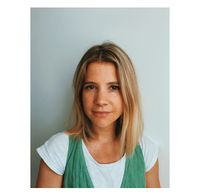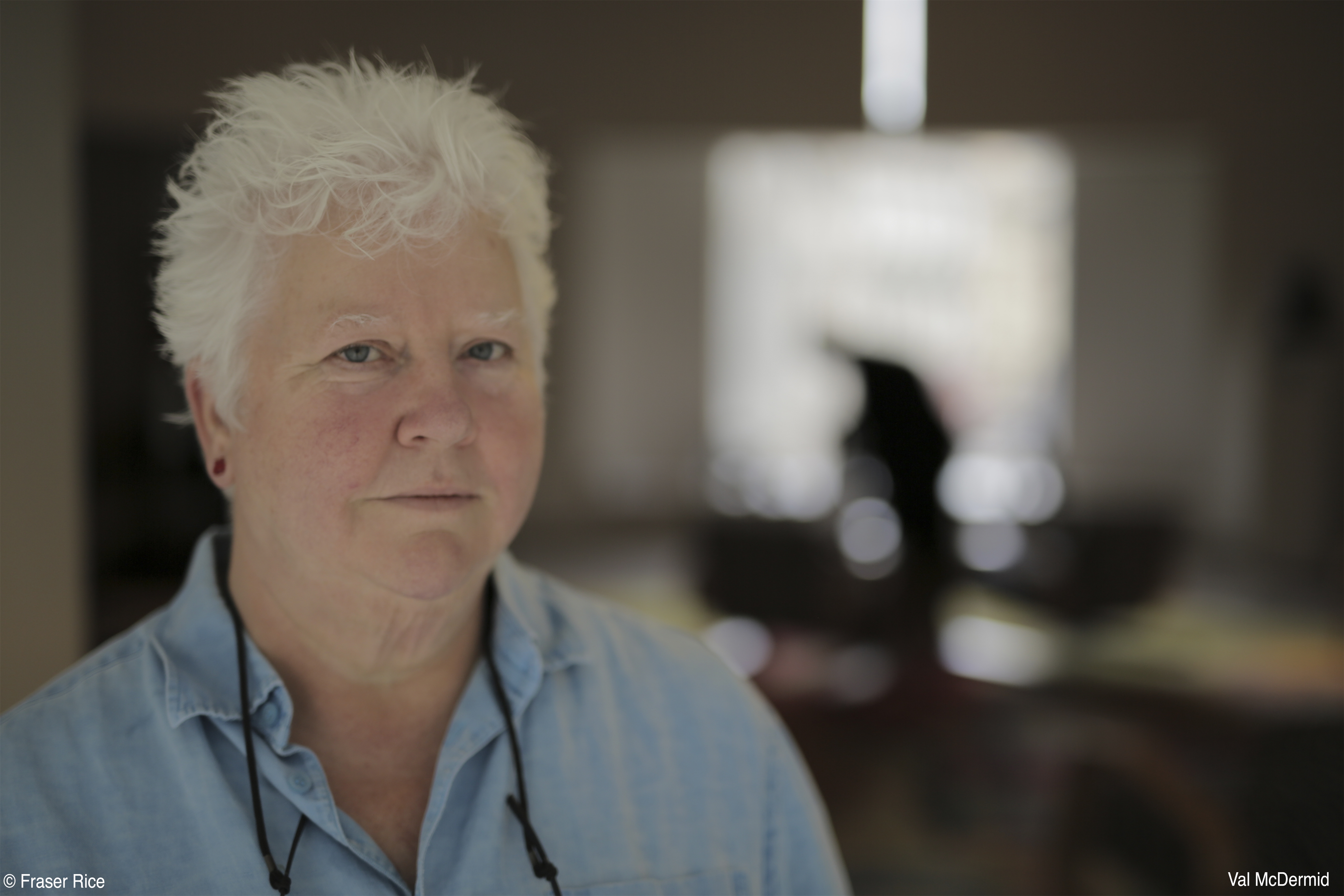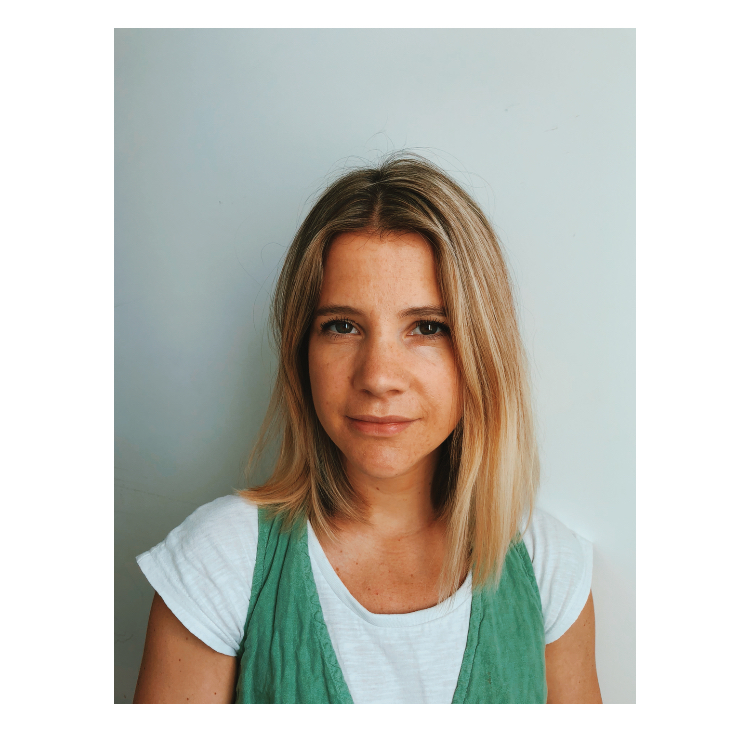How to write a killer crime novel, by Val McDermid (who's sold 15 million of her own)
For the first in our new Writers Bloc series, prolific crime writer Val McDermid tells Charlotte Philby the secret to writing 32 books in as many years


For the first in our new Writers Bloc series, prolific crime writer Val McDermid tells Charlotte Philby the secret to writing 32 books in as many years
Val McDermid is the multi award-winning author of 32 crime novels, which have sold more than 15 million copies worldwide and been translated into 40 languages. She is married to the professor Jo Sharp, and has a teenage son. McDermid divides her time between Cheshire and Edinburgh. Her latest novel Broken Ground is published by Little Brown (£18.99)
You've written 32 books in as many years with no signs of abating, and had your work adapted for TV. What are the most important lessons you've learnt about successfully drawing readers into the worlds you create?
I think the best crime novels are like a three-legged stool, they depend on character, story and setting - all are equally important. You can have a great story but if people don’t care about your characters they won’t remember your book two days after they’ve finished reading it, and at the heart of all great storytelling is character. You have to create characters that your readers think are plausible, that feel authentic and they have to care about them; they don’t have to love them, they don’t have to hate them, but they have to care about their fate; they need to have invested in the outcome for those characters.
I think people sometimes underestimate the power of setting, in particular with the crime novel, because everybody knows murders are not solved the way we write about them in our books, it’s not how it happens. If we wrote about the reality it would be so boring no one would read it, so what we have to do is to persuade the reader to come with us on this journey of suspension of disbelief, and anything you can do to make your book feel more plausible helps you with that. So if you write about place in a way that for someone who knows that place, that absolutely they’re there with you and you’ve got it right – the way people will read and think I know that café, I know that park, I’ve waited at that bus stop - if you get those details right then they trust you about everything else you’re telling them… In order to take people on that journey of setting, you make your setting vivid, you make it rich, you make it part of the world of the book, and you use all the five senses as well, sight, sound, smell, touch, hearing, and taste.
One of the things about P. D. James’ work that I think makes it so intriguing and so fascinating, is that all of her books are set in a different world of work, so she conjures up what it’s like inside a barristers' chambers, what it’s like inside a publishing firm, what it’s like working in a nuclear power station and she makes those worlds come alive - so you just believe everything else.
You’re incredibly prolific, as well as having brilliantly realised characters and great plots. Where do your stories come from and how do you develop them?
Celebrity news, beauty, fashion advice, and fascinating features, delivered straight to your inbox!
I used to plot things out very carefully, scene by scene, chapter by chapter, and about 14 or 15 books ago that stopped working for me so I now have a much freer approach to writing the story, to plotting the story; I kind of know the arc of the story, I know what I’m aiming for, I know the ending I’m aiming for, and I usually know two or three crucial turning points along the way, but the ideas, the initial trigger points can come from all sorts of places.
Sometimes someone will tell me a funny story, or an anecdote, or something odd that happened; sometimes I’ll hear something on the radio just in passing and I’ll think ‘Oh that’s interesting I didn’t know that, but what if it’s this instead of that?’; sometimes it’ll be, you know, I’m having a conversation with [the forensic anthropologist I consult for my books] Sue, because I’ve rung her up to ask her about something in the book I’m working on and we’ll chat away and we’ll chat away and she’ll tell me something that I didn’t know, and I'll immediately just think ‘Oh that’s really really interesting’.
Books take quite a long time in the head for me, from having the original idea to being ready to roll with the book, it can, it will be a minimum of a year, and it can be as much as you know a dozen years. I rewrite as I go. I’ve kind of got the basics down now; it’s been a long since I’ve had to do a structural rewrite.
And what about when you have a recurring character, do you have an arc in mind for them from the beginning?
No, it goes book to book… I don’t know when I start a book what the next one’s going to be but by the time I’m about three quarters of the way through, I start to have an inkling, a sense of where the next one might go, because by that time I’ll know where the characters’ lives need to move, or how they need to move forward from this book, that often acts as the trigger for me to know the kind of story I should be thinking about for them.
Then I kind of rifle through the filing cabinet in the back of my head to see what I’ve got kicking around that might do the trick, and then I’ll think about that, play with that idea, work with it, do any research that needs to be done, which sometimes is next to nothing and sometimes is a lot, it just depends on the idea and the book and the setting.
Your research is meticulous and you have a strong working relationship with forensic anthropologist Professor Sue Black, whom you consult for your books. How did that come about?
Well it came about through entire serendipity. This goes back to around 1995 thereabouts, and I was in Manchester and Sue was in Aberdeen and we were both taking part in a radio programme that was coming out of Glasgow and, as is often the way when you’re doing that kind of thing, they kind of park you where you can speak to each other before you go on air so you’re not just left hanging in a void, and so we started chatting and Sue very foolishly said if you ever need any help with anything forensic then give me a ring...
A year or so later, I was working on a book called Wire in the Blood and the question I had was ‘What kind of piece of forensic evidence would be analysable now that wasn’t analysable 20 years ago?’ So we started talking about tool marks and the advances in electron microscopy and we got on very well, and over the following years I would ring up when I needed some information or some help with something, and we developed a friendship, really. Over the years she’s introduced me to a lot of other forensic scientists, who like Sue are very good communicators.

How do you file the things you learn along the way?
In my head. If it’s not interesting enough for me to remember it accurately then it’s not interesting enough to interest a reader. That’s my basic rule of thumb, so mostly things stay firmly lodged in my head until I actually start writing.
Then what I tend to do is just jot down the next four sections, the next five sections, so I’m always kind of what E. L. Doctorow described as ‘driving at night writing’. This is like you’ve got a destination in mind but you leave your home base and you head for your destination but you can only see the bit of the road that’s lit up by your headlights, so you keep moving forward and you can see that little bit of road in front of you and you have to sort of fare forward in the confidence that all these bits of road will join together and take you either directly to your destination or as near as makes no difference.
That’s very much how it feels for me now; there will always be a few cruxes along the way that I kind of know what they are, and I suppose they’re a bit like the service stations aren’t they? Like you think ‘Oh yeah I know Hartshead services is down here somewhere’, so it’s sometimes a little bit unnerving because I sometimes think 'have I driven down a dead end here?’
But I’ve learned to trust myself and I revise as I go along. Every day the first thing I do, when I’m in the writing phase, is to revise what I’ve done the day before. Then every couple of weeks I’ll print out a chunk and read that through to make sure it flows smoothly, and that you know each strand of the story is getting enough attention and that I haven’t left a character alone for too long, and that’s really just you know start at the beginning and plough through to the end.
How long do you spend on a novel, and what's your writing routine?
When I’m in writing phase I work seven days a week. But that’s only three or four months a year. The rest is not so much research as thinking time and parking stuff to let it fester. This is one of the few jobs where you can actually get paid while you’re sleeping in essence.
If in the morning I know I’m going to be writing a scene that’s not quite clear in my head yet, or a difficult confrontation, or a complicated transition, or I’m not quite sure why somebody’s doing something at all, then I’ll set myself a problem when I’m going to sleep and I’ll talk myself to sleep almost through it, and then nine times out of ten when I get in the shower in the morning, the answer’s there.
I try to get out in the fresh air every day because walking is really a helpful thing for me to; there’s something about the rhythm, particularly the rhythm of walking by water, and you know the water of Leith is just at the end of our street in Edinburgh, so I just walk down the end of the street and and that somehow just often loosens things up, it gets rid of the stone in your shoe or whatever, and then just go back and you’re ready to roll again.
